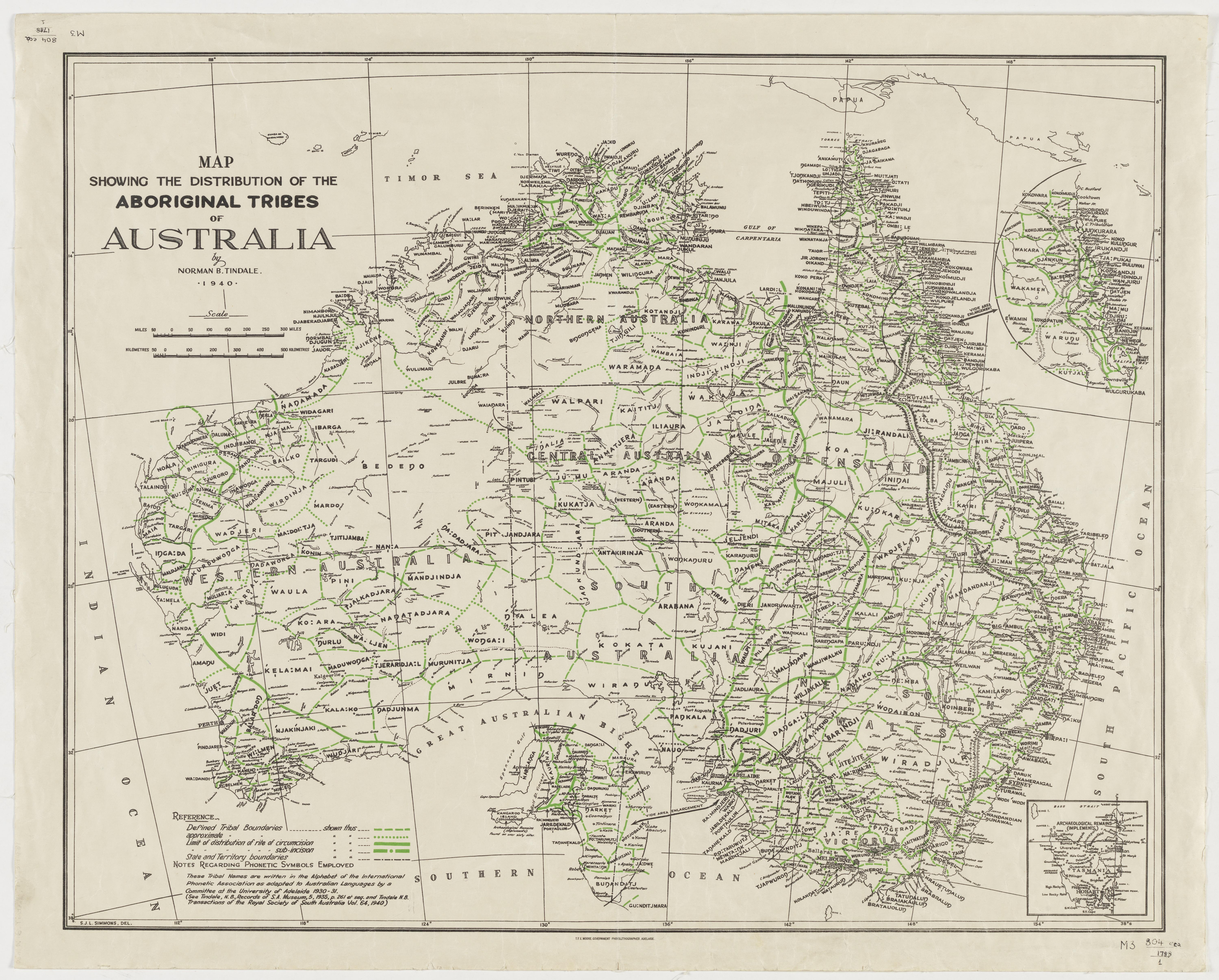The Tindale Genealogies
These extensive records trace the names and photographs of many Indigenous people, dating back to the 1860s and 1870s.
What are the Tindale genealogies?
Norman Tindale and his colleague Professor Joseph Birdsell carried out what has been called one of the greatest systematic genealogical surveys conducted on any indigenous population anywhere in the world.
They conducted the survey as part of the joint Harvard-Adelaide Universities' Anthropological Expedition of 1938-39. Tindale, Birdsell and their colleagues recorded ethnographic, biological and eugenic data and photographed about 2400 peoples from Queensland, New South Wales, Victoria, South Australia and southern Western Australia.
The team recorded the names of around 50,000 Aboriginal people in genealogical charts tracing back to the 1860s and 1870s. Subsequent expeditions in the 1950s and 1960s collected data on approximately 5000 more people.
The original records from the expeditions are held at the South Australian Museum.
New South Wales records
The New South Wales component of the Tindale genealogies includes charts and photographs from nine communities, mostly collected in 1938.
These communities are:
- Boggabilla
- Brewarrina
- Cummeragunga
- Kempsey
- Menindee
- Pilliga
- Walgett
- Wallaga Lake
- Woodenbong.
Copies of these records were supplied to the Library by the South Australian Museum, to be made available under specific conditions.
Who can view the Tindale Genealogies?
Access to the Tindale Genealogies is only available by request. You can view them if:
- you're a direct descendant of a community or family mentioned
- you have written approval from a community or family mentioned.
This restricted-access policy is in the interests of privacy and respect for the communities mentioned in the genealogies. It is a required condition for access implemented by the South Australian Museum, and has been agreed to by the Library.
Using the Tindale genealogies
If you meet the criteria for viewing the genealogies, follow these steps:
- Check the Index to the NSW Tindale Genealogies to see if the family name you’re looking for is listed. Take a note of the family name, community name and sheet number(s). Many Aboriginal people travelled around NSW, so a family may have roots in one community but appear in another.
- Contact the Library's Indigenous Engagement staff. You’ll need to provide the information you’ve noted from the index, and to show how you meet the criteria for access.
Again, these records are restricted, and you must be a direct descendant, or have written approval from communities or families mentioned in the genealogies to view them.
Contact us
Email: koori.kin@sl.nsw.gov.au
Phone: (02) 9273 1577
Sensitivity warning
These genealogies contain historical terminology that may offend. Racist terms such as 'half caste' or 'full blood' commonly appears on the sheets.
We recommend viewing the genealogies with the Library's First Nations specialist staff for clarification and cultural safety.
